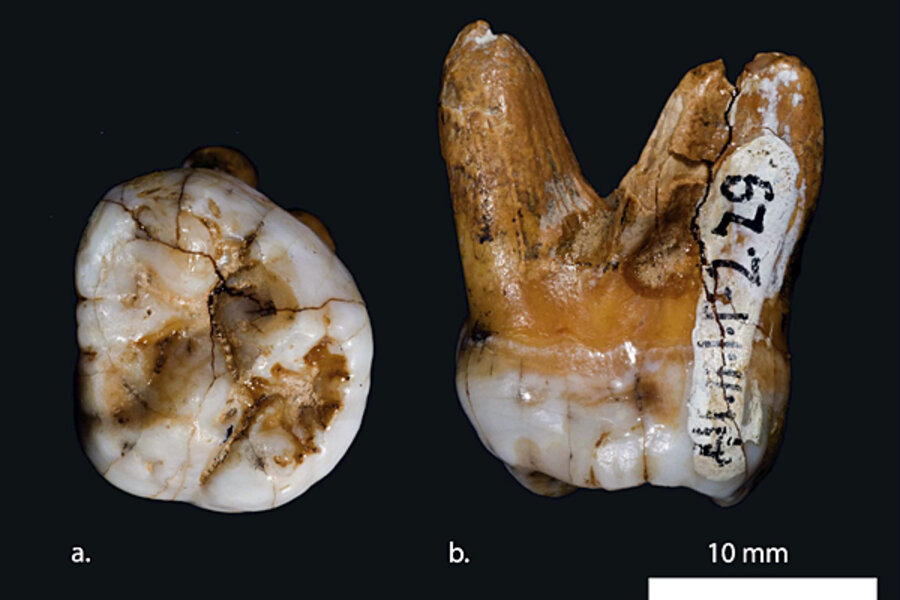Mysterious X Woman finds place on humans' family tree
Loading...
Modern humans appear to have a new, distant relative on the ancient family tree.
Only seven months ago, scientists caller her X Woman. Now, after more-detailed study, they've tagged her and her kin with a new identity: She's counted among the Denisovan, a new group of hominin that researchers estimate split from a common ancestor with Neanderthals some 640,000 years ago, after Neanderthals and modern humans diverged from their common ancestor.
The analysis, published in Thursday's issue of the journal Nature, is based on genetic material extracted from a finger bone and a tooth found in 2008 in Denisova Cave in southern Siberia. The researchers were able to reconstruct the individual's genome, then compare it with those of Neanderthals and modern humans.
Among other stories the genetic information revealed: Denisovans appear to have contributed between 4 and 6 percent of the genes carried by today's Melanesians, who live on a broad arc of Pacific islands that stretches southeast from New Guinea.
Based on the new results, "we now know that this population existed," notes David Reich, a geneticist at the Broad Institute of the Massachusetts Institute of Technology and Harvard in Cambridge, Mass.
That information should encourage archaeologists to hunt for sites the Denisovans would have occupied, he says. Uncovering sites will be crucial to reconstructing what the Denisovans looked like and teasing out information about their culture, he explains.
Discovery of the fossil remains and some initial results from genetic studies of the remains were announced in March by an international research team. At the time, all the team could say was that the finger belonged to a female whose mitochondrial DNA – genetic material found in cells outside the cell nucleus and inherited from the maternal side of the lineage – indicated that her line had split from Neanderthals some 500,000 years ago and from modern humans roughly 1 million years ago.
This time around, however, the team was able to isolate DNA from the nucleus of cells, allowing for a more robust analysis.
The researchers now estimate that the female, between five and 10 years old, represented a new line of hominin that split some 804,000 years ago from the line that would give rise to modern humans, and split 640,000 years ago from the line that yielded Neanderthals.
With the appearance of some of the Denisovan genes in Melanesians, the team posits that these hominins could have appeared throughout Asia during the Late Pleistocene, a 116,000-year period that began roughly 126,000 years ago.
The results also reinforce the notion that as hominins moved out of Africa and into Europe and Asia, the interbreeding between successive waves of early emigrants and the populations they encountered occurred more frequently than previously thought.
Earlier this year, team member Svante Paabo of the Max Planck Institute for Evolutionary Anthropology in Leizig, Germany, who pioneered techniques for analyzing DNA extracted from fossils of early humans, and colleagues finished sequencing the entire Neanderthal genome. They found that from 1 to 4 percent of the genes in people around the world today – including islands in the southwest Pacific – are inherited from Neanderthals. The exception: No genomes from people in sub-Saharan Africa were found to have Neanderthal genes.
Now, with Denisovan genes cropping up in modern Melanesians, "we have found evidence for a second gene flow event," although it's from a different source and moved into a smaller set of modern genomes, Dr. Reich explains.





